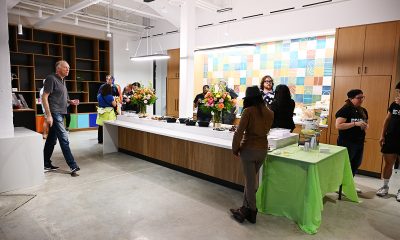Financial
RedRocks is H Street gem
Emerging corridor’s newest venue shines bottom to top

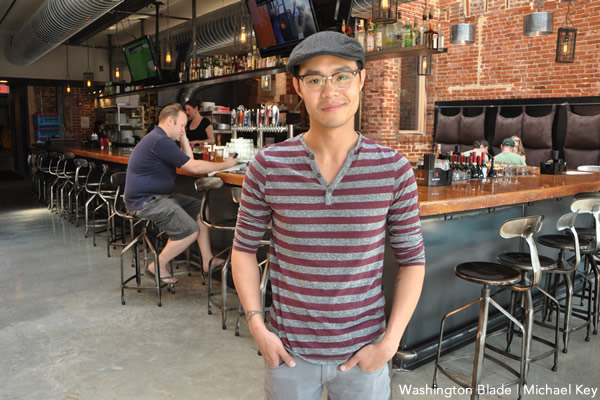
Ken Fulkroad is general manager of the newest of four area RedRocks locations. (Washington Blade photo by Michael Key)
When Kenneth Fulkroad moved to D.C. a little more than two years ago, he knew where he wanted to end up. Recently hired to open and manage a sparkling new multi-level restaurant and bar that has quickly become a prominent highlight there was a bonus.
Gravitating to the still rugged “edginess” of the re-developing H Street commercial corridor in Northeast Washington, Fulkroad eventually settled in the adjacent Trinidad neighborhood immediately to the north. A transplant most recently from New York, it was the section of town he found reminiscent of Brooklyn and the East Village.
The 29-year-old hospitality professional and now general manager of the newest of four area RedRocks locations feels most at home where the “hipsters” he unselfconsciously references have migrated in discernable numbers. A veteran of service, operation and management at diverse casual and fine-dining establishments in Boston, New York and D.C., Fulkroad learned the trade by hands-on experience.
A topsy-turvy hardscrabble childhood spent growing up gay near Boston instilled in a self-described “awkward nerd” an independent character and self-reliant work ethic. Beginning with his first eatery job at age 18, the whip-smart articulate dynamo served as dishwasher, busboy, bartender, bar manager, waiter and general manager – along with a stint working with the youngest master sommelier in the U.S. Fulkroad’s largely improvisational and often out-of-sequence job ascension skilled him in all facets of restaurant, lounge and bar operation.
He oozes excitement at coordinating the three-level multi-space hotspot and latest RedRocks venture of co-owners James O’Brien and Doug Baj – at 1348 H St., N.E., directly opposite the Rock & Roll Hotel and adjacent to the landmark Atlas Performing Arts Center a few paces down the streetcar-ready boulevard. It became H Street’s largest venue upon opening last month.
Glass doors spanning the front swing open to the sidewalk allowing engagement between streetscape and interior on the first level. Arriving patrons are greeted by a large rectangular wood-topped bar surrounded by table seating. Red brick walls and exposed ceilings with large loft-style industrial ductwork combine to create a comfortable modern environment. A brick wood-burning pizza oven is emblematic of the ambient casual coziness.
Hovering above the concrete floor is a second-level catwalk with tables joining separate open dining areas featuring banquettes nestled among two bay windows street-side. A private rear dining room, bar and special event space, replete with an elevated DJ booth, completes the upstairs. Dark wood planks are underfoot with expansive windows seemingly everywhere.
Soaring overhead is one of the largest retractable skylights in the city – opening the central rooftop to both levels below and granting visibility to the sky from every angle. The distinctive melding of indoors and out doesn’t end there. A roof deck with both table seating and bar areas offers panoramic views above the area’s low-slung architectural topography with the U.S. Capitol visible to the southwest.
The venue has engendered quick affection from guests eager to welcome this latest addition to the strip. Patrons enjoy a well-rounded bistro menu and up to two-dozen craft beers on tap alongside specialty cocktails and standard bar concoctions.
Fulkroad is preparing to launch two special LGBT events later this month – a Thursday night DJ dance party and a special Sunday drag brunch featuring the rollicking performances of Shi-Queeta Lee and her harem of queens. Soon-to-be-announced and held on a monthly schedule with future frequency based on buzz, these events will offer the area’s growing number of gay and lesbian habitués with a first-ever series of community events.
The quick popularity of this unique gem of a destination bodes success for both.
Mark Lee is a long-time entrepreneur and community business advocate. Follow on Twitter: @MarkLeeDC. Reach him at [email protected].
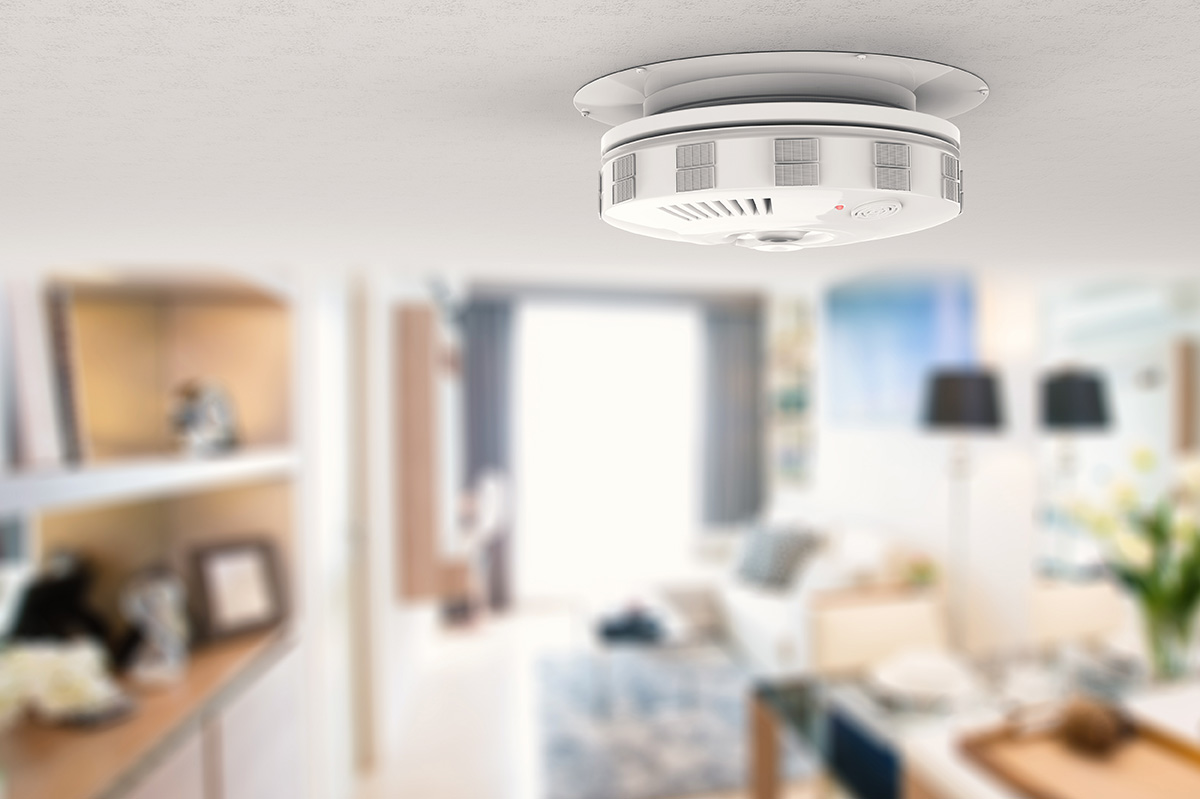
As the spring market hits its stride, we are beginning to see more inventory and an increase in days on the market in parts of the DMV. This may result in professional home inspections becoming routine parts of contract offers again. A thorough home inspection can help catch safety issues early and is an opportunity to learn about the operation and maintenance of items in your home.
Pay attention to flickering lights, frequently tripped breakers, and discolored outlets—these are signs of potential electrical hazards. Outdated wiring, overloaded outlets, and faulty appliances can lead to electrical fires.
Structural issues are often overlooked until it’s too late. Crumbling foundations, weak or damaged stairs, loose railings, and uneven flooring can cause trips and falls. Water damage from leaks or flooding can weaken the integrity of floors and walls, creating a risk of collapse.
Toxic chemicals can pose serious threats to health and safety, often without obvious warning signs. Understanding and addressing these risks is crucial for maintaining a safe living environment for you and your loved ones.
Household products such as cleaners, pesticides, air fresheners, and even cosmetics can emit volatile organic compounds (VOCs). These compounds, when inhaled regularly, can cause a range of health issues including headaches, respiratory problems, hormonal disruptions, and in some cases, even cancer. To minimize these risks, homeowners should opt for low-VOC or VOC-free products, ventilate regularly, and consider investing in an air purifier.
Formaldehyde is another common toxin found in pressed wood products, insulation, and certain paints. Long-term exposure can lead to chronic respiratory problems and has been linked to cancer.
Radon gas, another possible carcinogen, is prevalent in the DMV. Your home inspector can do a radon test or there are DIY kits available at many hardware stores. If levels are above EPA standards, a professional remediation firm can install a system that extracts the radon and vents it safely outdoors.
Carbon monoxide (CO), a colorless, odorless gas, is produced by gas stoves, heaters, and fireplaces. Exposure can lead to headaches, dizziness, nausea, and even death. Install CO detectors near bedrooms and ensure that all fuel-burning appliances are properly maintained and ventilated.
Additionally, older homes may still contain asbestos in insulation, floor tiles, or roofing materials. If disturbed, asbestos fibers can become airborne and are highly dangerous when inhaled, leading to serious diseases such as mesothelioma, so when renovating an older home, it’s critical to have materials tested for asbestos before beginning work.
Mold and mildew thrive in damp, poorly ventilated areas such as bathrooms, basements, and around leaky pipes. While some molds are harmless, others can cause allergic reactions or respiratory problems and aggravate conditions such as asthma. Black mold (Stachybotrys chartarum) is notorious for producing mycotoxins that may lead to severe health issues.
Signs of mold include musty odors, visible growth on walls or ceilings, and excessive humidity. Preventing mold growth requires controlling moisture levels—using dehumidifiers and vapor barriers, fixing leaks promptly, and ensuring adequate ventilation. Professional mold remediation may be necessary for severe infestations.
Though banned in residential paints in 1978, lead-based paint still exists in millions of older homes. Lead exposure is especially dangerous for children, causing developmental delays, learning difficulties, and behavioral issues. Adults are not immune – lead can lead to high blood pressure, kidney damage, and reproductive problems.
Even dust from deteriorating lead-based paint can be hazardous. The EPA recommends professional lead testing for any home built before 1978, especially if renovations are planned. Certified abatement professionals can safely remove or encapsulate lead paint.
Improper use of heating equipment, fireplaces, unattended candles, and cooking accidents are common sources of home fires. Smoke alarms and fire extinguishers are essential for early detection and response. Test smoke detectors monthly and change batteries at least once a year.
Homes that are safe for adults may not be safe for children or pets. Small objects, unsecured cabinets, toxic plants, and open staircases can pose significant risks. Childproofing measures such as outlet covers, safety gates, and cabinet locks, along with safe storage of chemicals and medications, are essential precautions.
The good news is that many of these risks can be mitigated with awareness and action. Here are a few simple steps to enhance home safety:
• Conduct a thorough safety audit using checklists available online.
• Ensure proper ventilation to reduce indoor air pollutants.
• Regularly check for leaks and signs of water damage.
• Keep cleaning and chemical products out of reach of children.
• Educate all household members about emergency procedures, including fire escapes and first aid.
Our homes should protect us, not pose threats to our well-being. By identifying and addressing these toxic and unsafe issues, we can transform our living spaces into truly safe havens.
Valerie M. Blake is a licensed Associate Broker in D.C., Maryland, and Virginia with RLAH @properties. Call or text her at 202-246-8602, email her via DCHomeQuest.com, or follow her on Facebook at TheRealst8ofAffairs.
Real Estate
April showers bring May flowers in life — and in real estate
Third time’s the charm for buyer plagued with problems
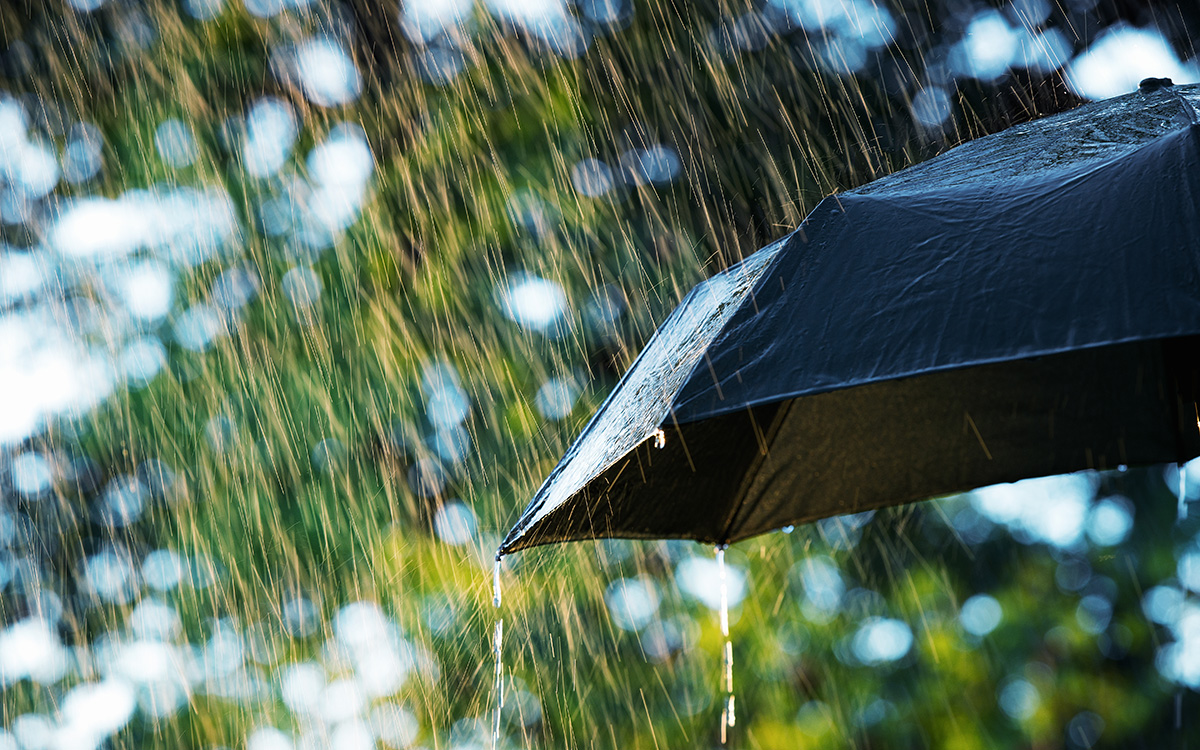
Working in the real estate sector in D.C. can be as uniquely “D.C.” as the residents feel about their own city. On any given day, someone could be selling a home that their grandmother bought, passed on to the relatives, and the transfer of generational wealth continues. In that same transaction, the beginning steps of building of generational wealth could be taking place.
Across town, an international buyer could be looking for a condo with very specific characteristics that remind them of the way things are “back home.” Maybe they want to live in a building with a pool because they grew up by the sea. Maybe they want a large kitchen so they can cook grandma’s recipes. Maybe they will be on MSNBC once a month and need to have a home office fit for those Zoom sessions where they will be live on air, or recording their podcast. Perhaps they play the saxophone and want a building with thick walls so they can make a joyful noise without causing their neighbors to file a cease-and-desist order.
What I found fascinating was getting to know my buyers. Why were they purchasing their property? What did they want to do with it? Was this their grandmother’s dream that they would have a place of their own someday? Did they finally think they would write that award-winning play in the home office? What dreams were going to be fulfilled while taking part in this transaction?
Somedays, the muck and paperwork slog of navigating home inspection items and financing checklists could get to be distracting at best, and almost downright disheartening at worst.
One of my clients was under contract on THREE places before we finally closed on a home. One building was discovered to have financing issues, and the residents were not keeping up with their condo fees. Another building had an issue with the title to the unit, which meant the seller could not sell the home for at least another year until that legal snag was resolved. As the months rolled by, she was losing heart and feeling defeated. When we finally found the third home, everything seemed great – and then about two weeks before the settlement, the rains came down and the windows leaked into the bedrooms.
Another delay. (Our THIRD). This time, for several more weeks.
I think she wanted to pack a suitcase, go to the airport, get on a plane somewhere and never come back. What ultimately happened? The building repaired the windows, the seller’s insurance replaced the hardwood floors, and she bought her first condo, which she still enjoys to this day.
As Dolly Parton says, “If you want the rainbow, you’ve got to put up with a little rain.” And finally, after months of looking, waiting, and overcoming obstacles, the rainbow peeked out from behind the clouds.
Joseph Hudson is a referral agent with Metro Referrals. He can be reached at 703-587-0597 or [email protected].
Real Estate
Spring updates to sell your home for pride and profit
Consider new landscaping, power washing, creative staging
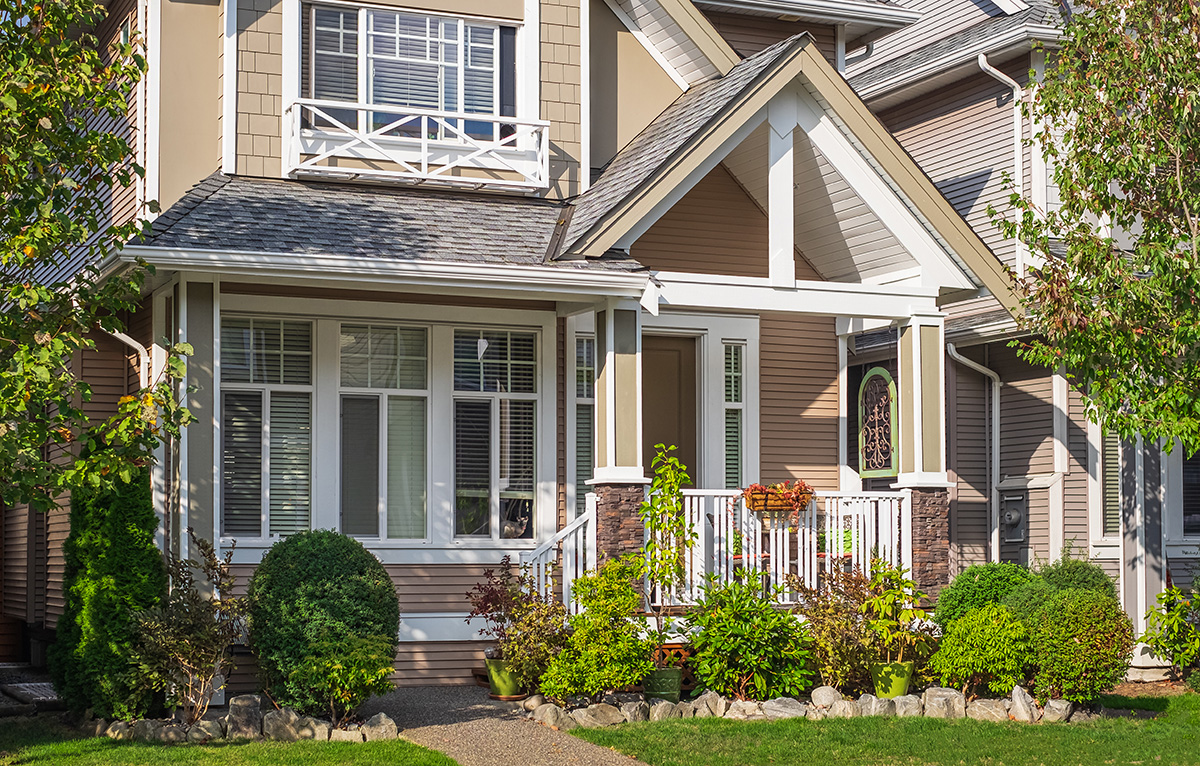
Selling a home is a big deal for anyone, but for members of the LGBTQ+ community, it comes with unique considerations—from finding affirming professionals to ensuring your home is represented in a way that reflects your values. Whether you’re a first-time gay home seller or a seasoned LGBTQ+ homeowner looking to move up, maximizing your home’s value is key to a successful and empowering sale.
Here’s how to prepare your home, your mindset, and your real estate strategy to get the most value—financially and emotionally—from your home sale.
1. Start with an LGBTQ+-Friendly Real Estate Agent
Before diving into renovations or staging, make sure your agent truly understands your needs. A gay-friendly or LGBTQ+-affirming real estate agent brings more than just market expertise—they bring cultural competence, safety awareness, and a network that supports you throughout the selling process.
At GayRealEstate.com, you can find experienced, vetted LGBTQ+ real estate agents who have been proudly serving the community for over 30 years. Working with someone who shares or supports your identity ensures your selling journey is respectful, inclusive, and effective.
2. Enhance Curb Appeal—With a Welcoming Vibe
The outside of your home is the first impression a potential buyer gets. Make it count—especially for LGBTQ+ buyers looking for a home that feels safe and welcoming.
- Fresh landscaping: Add colorful flowers, neatly trimmed shrubs, or low-maintenance greenery to appeal to eco-conscious buyers.
- Update the entrance: A new front door, stylish lighting, or even a rainbow doormat can make your home feel like a safe space from the start.
- Clean and repair: Power wash the exterior, touch up paint, and make any necessary repairs to gutters, windows, or siding.
3. Stage with Intention and Inclusivity
Home staging can add thousands to your sale price. But beyond the usual decluttering and neutral palettes, think about how your space tells a story—and who it’s telling it to.
- Create a warm, inclusive feel: Subtle touches like LGBTQ+ art, books, or even coffee table magazines can show off your personality and affirm the space for queer buyers.
- Depersonalize—but don’t erase: You don’t need to hide your identity to appeal to buyers. Let your home feel lived in and loved—while still being a blank canvas others can imagine themselves in.
- Highlight multi-use areas: Home offices, gender-neutral nurseries, or flex spaces resonate with LGBTQ+ families and professionals.
4. Update Kitchens and Bathrooms Strategically
These rooms matter most to buyers—and even small updates can yield big returns.
- Kitchen: New cabinet hardware, a fresh backsplash, and modern lighting can elevate the entire room without a full remodel.
- Bathroom: Replace old fixtures, re-caulk tubs and sinks, and add plush towels and inclusive décor.
- Energy-efficient upgrades: Touchless faucets, smart appliances, or low-flow toilets are not only trendy—they signal sustainability, which matters to LGBTQ+ buyers.
5. Make Your Home More Energy Efficient
LGBTQ+ homebuyers often prioritize sustainability. These updates not only reduce energy bills but make your home more marketable.
- Install a smart thermostat (like Nest or Ecobee)
- Upgrade insulation or windows
- Consider solar panels (especially in sun-drenched regions like California or Florida)
Bonus: You may qualify for state or federal tax credits, which can be a great selling point.
6. Know and Advocate for LGBTQ+ Housing Rights
Although housing discrimination is illegal under the Fair Housing Act, it still happens. As an LGBTQ+ seller, be aware of your rights—and those of potential buyers.
- Avoid steering or bias: Even with good intentions, make sure you’re not inadvertently influencing who views or buys your home based on identity.
- Work with affirming professionals: From inspectors to lenders, choose partners who support inclusive practices.
- Report discrimination: If you or a buyer encounters bias, report it to HUD or your local housing authority.
7. Price Your Home Right—and Market It Smartly
Setting the right price is essential to maximizing value. Your LGBTQ+-friendly agent can run a comparative market analysis, considering current trends and buyer demographics.
- Leverage LGBTQ+ real estate networks: Promote your home through platforms like GayRealEstate.com to reach an audience that understands and values your space.
- Use inclusive language in listings: Avoid gendered terms or heteronormative assumptions. Instead of “his and hers closets,” use “dual walk-ins” or “double closets.”
- High-quality photos and video tours: Showcase your home with professional, visually inclusive marketing that appeals to diverse buyers.
8. Consider Timing and Local LGBTQ+ Trends
Selling during WorldPride or just before local LGBTQ+ events may boost visibility. Also consider if you’re in or near an LGBTQ+ friendly city or neighborhood.
Not sure which areas are top destinations? GayRelocation.com tracks and shares the best cities for LGBTQ+ homebuyers, helping you tap into motivated buyers.
Final Thought: Sell with Confidence—and Community
Selling your home isn’t just about getting top dollar—it’s about closing a chapter with pride and integrity. When you center your values, work with LGBTQ+ affirming experts, and prepare your home with purpose, you’re not just maximizing your home’s value—you’re creating an empowering experience for yourself and the next owner.
Whether you’re buying, selling, or both—GayRealEstate.com is your trusted partner in every step of your journey. With a nationwide network of gay and lesbian realtors, decades of experience, and deep community ties, we ensure your home transition is safe, smart, and full of pride.
GayRealEstate.com is the nation’s leading online platform connecting LGBTQ+ home buyers and sellers with LGBTQ+ friendly real estate agents, ensuring a safe and supportive experience.
Scott Helms is president of GayRealEstate.com. To find an agent or learn more, visit GayRealEstate.com, GayRelocation.com or call 1-888-420-MOVE.
-

 The Vatican23 hours ago
The Vatican23 hours agoAmerican cardinal chosen as next pope
-
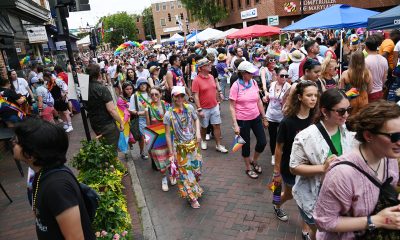
 a&e features1 day ago
a&e features1 day agoYour guide to the many Pride celebrations in D.C. region
-

 U.S. Supreme Court3 days ago
U.S. Supreme Court3 days agoSupreme Court allows Trump admin to enforce trans military ban
-

 District of Columbia2 days ago
District of Columbia2 days agoWorldPride permits for National Mall have yet to be approved




